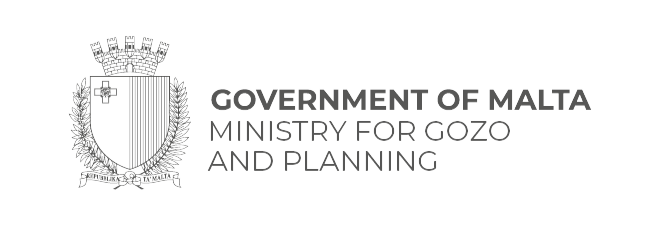With 3,000 hours of sunshine each year, an award-winning clean coast and an array of scenic caverns, caves and offshore reefs with unique underwater species living amongst them; it’s no wonder Gozo attracts divers from across Europe and beyond – all wanting to explore the sub-aquatic mysteries of this Mediterranean isle.
Because Gozo is a small island with easily accessible beaches, most dives happen from the shore. In fact, even while swimming or snorkeling along our coast you’ll be enthralled by the fish moving around you as the transparency of the water lets you easily observe marine life drawn to Gozo’s temperate shores.
Pete Bullen is a renowned diver and underwater photographer who runs Oceanfoto.co.uk. He lives in Gozo and has been diving around its coast recording its marine life for over 12 years. He says: “Whatever type of dive or underwater experience you are seeking, you will find it in Gozo. Gozo has depth for depth junkies who like deep dives and we have some interesting underwater wrecks for rust seekers. There’s topology and caves for people who enjoy caving and cavern diving and we have some fantastic marine life. Plus, the water clarity during the summer is exceptional. The underwater visibility on a bad day in Gozo is 20 metres and a good day is 70 metres, I‘ve seen people genuinely shocked by the depths and visibility 40 metres down.”
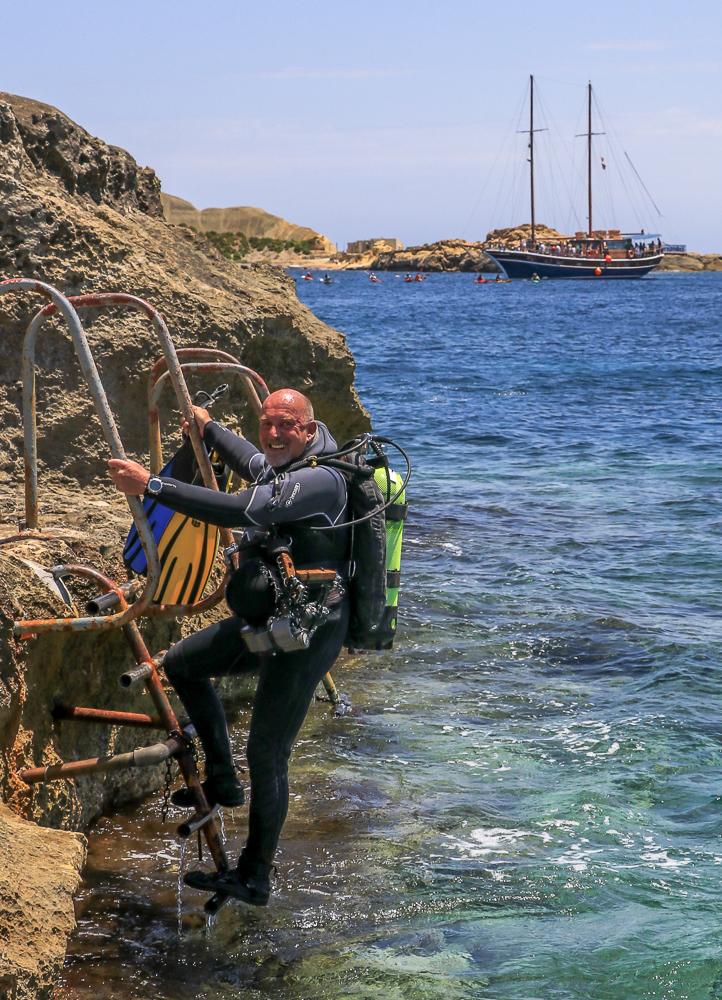
The waters around Gozo are also home to shoals of Amberjack and Barrcuda and if you know which parts of the island to head to you may even get to see a Cuttlefish or European Conger Eel. John Dory are also plentiful in Gozo.
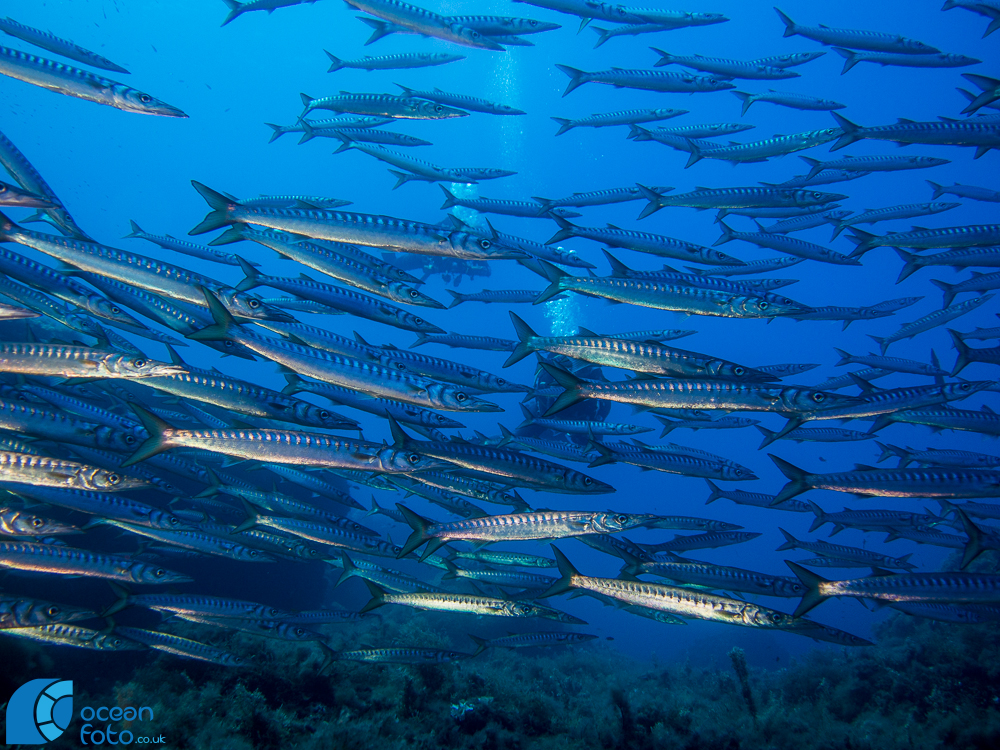
So, in honour of the marine life living in our Mediterranean waters, this week’s VisitGozo blog brings you: 6 marine species you’ll find while diving in Gozo.
1. The Painted Comber
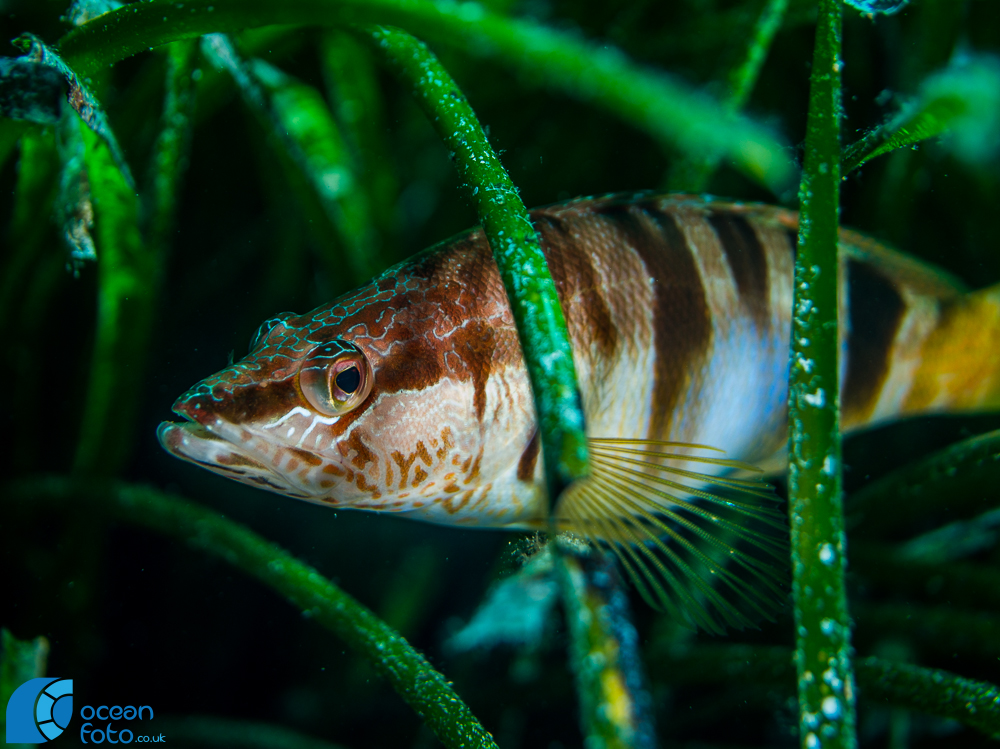
The photo above shows a Painted Comber and as you can see from its brown and gold markings it is a beautiful fish. This reef fish is commonly found in the waters all around Gozo throughout the year. They live off smaller fish, fleas and shrimp. Divers often get excited when they see a couple of Painted Comber’s together because they scavenge food scraps from larger sea creatures and so are a good indicator that an Octopus, Moray Eel or a Spider Crab is nearby. It is the male Painted Comber who has a blue spot marking on its side.
2. Cardinal Fish
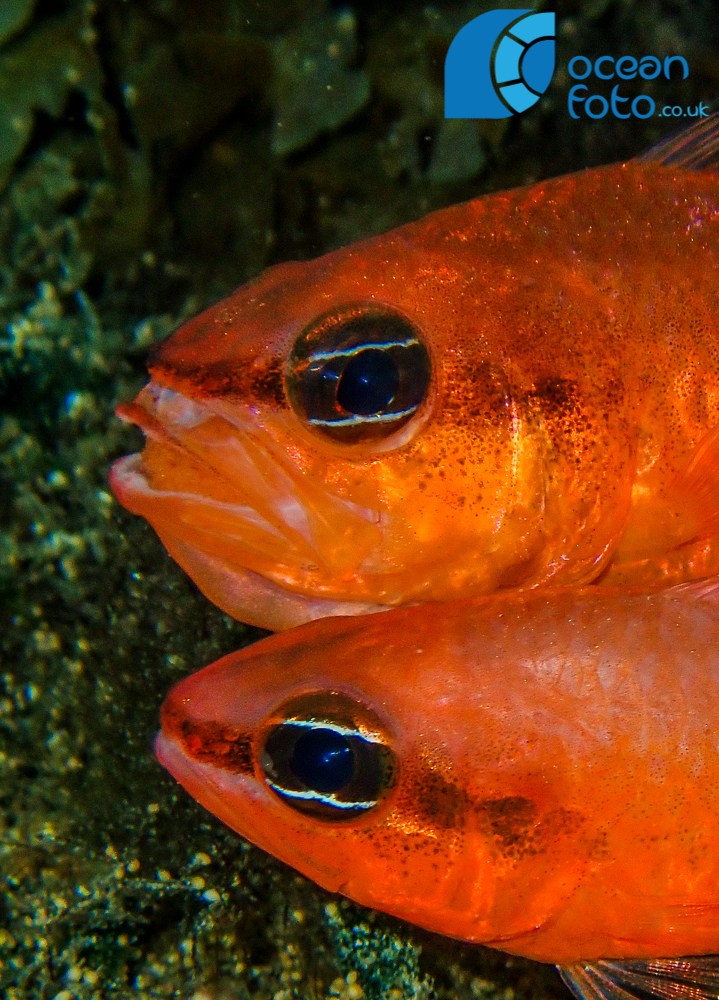
The Cardinal Fish is another fish you can find all year around in Gozo. Although the male (pictured at the top of this photo) doesn’t look particularly happy, he’s actually concentrating because he’s carrying a couple of a million of his mate’s eggs in his mouth. He is incubating her eggs and keeping oxygen enriched water flowing over them, she is in constantly by his side making sure he’s doing his job properly. Marine photographer, Pete Bullen took this photo during the summer in Gozo and says it’s taken 9 years to capture this activity on film. A difficult feat, especially as Cardinal Fish populate dark areas – when they venture out they already have their exit strategy planned and if you get too close they’ll simply dart back underneath the rocks.
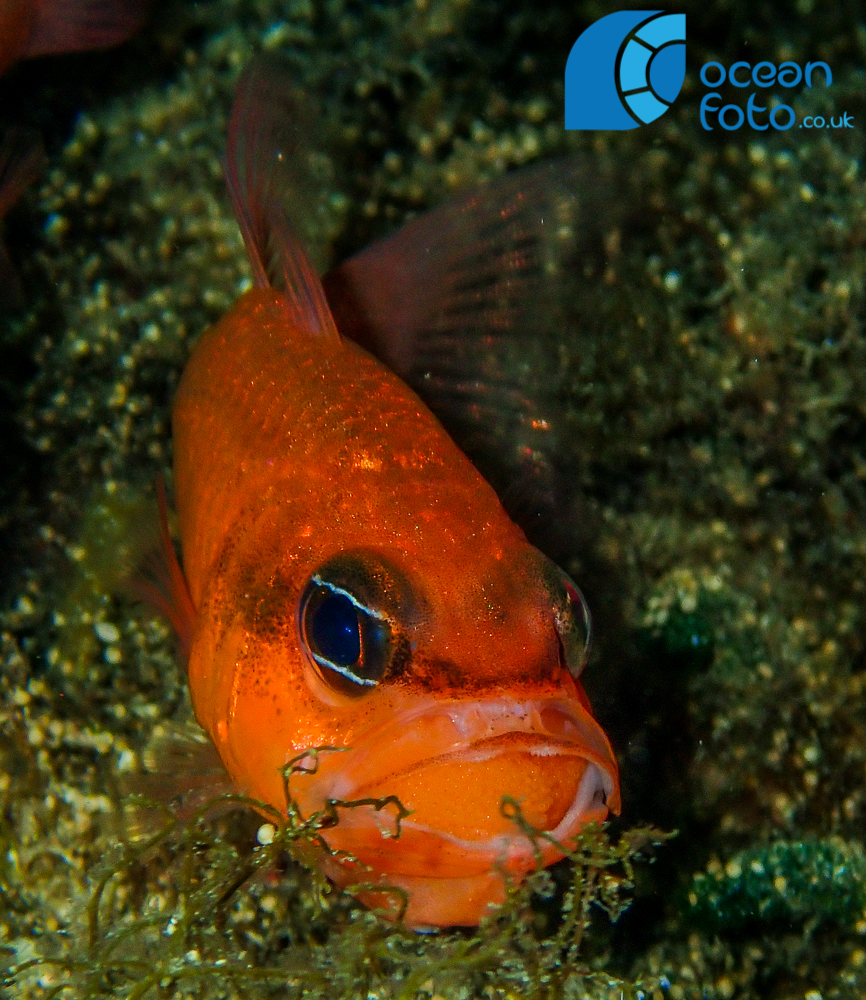
This hermaphrodite behavior, where the male adopts responsibility for safeguarding the eggs is shared by another of Gozo’s underwater species.
- The Hippocampus Seahorses. Gozo is home to two different types of seahorses, The Spiny Long Nosed Sea Horse and the Short-Nosed Sea-Horse. With sea horses, it’s the male who carries the babies. So, when you see a pregnant seahorse (like the Short-Nosed pregnant seahorse, snapped in Gozo’s waters and shown in this picture below) it is the male. The female seahorse lays the eggs and her male partner immediately takes these into his ventral pouch, incubating them until they are big enough to survive in the open seas.
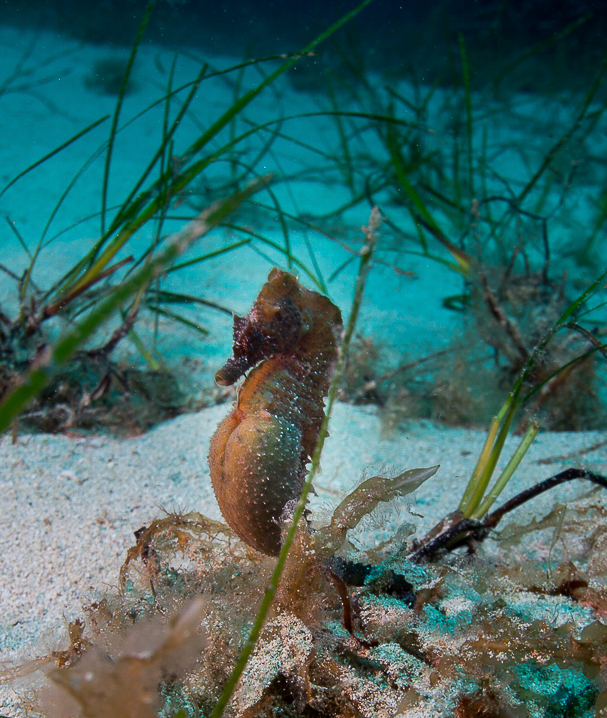
Seahorses are great at camouflaging themselves and because they can’t swim quickly enough to escape predators, their survival tactic is to blend in and hide. They are bottom-feeders, eating tiny shrimp and microscopic animals invisible to the naked eye. Seahorses must eat 3 or 4 times their bodyweight daily, so, that’s why they are constantly tilting back and forth snacking on the sea bed. They change colour dramatically depending on their immediate environment. Because the run off from the land carries toxins which they ingest, their immune system keeps these toxins in their spines and caratace until times of stress. If Seahorses become stressed, their immune system is weakened and at this point the toxins move back into their body and could kill the animal.
So, while diving in Gozo if you spot a Seahorse give it space and avoid stressing these delicate and protected creatures. If you are taking underwater photos never use a flash, it is illegal as it may cause them stress and possibly damage their eyesight. If a seahorse turns its back on you, it is stressed, its next line of defence is to lay down and play dead and as a last resort it will swim away. So, if the Seahorse is displaying early signs of stress, back off and wait for it to relax and start feeding again.
- Sarpa Salpa.
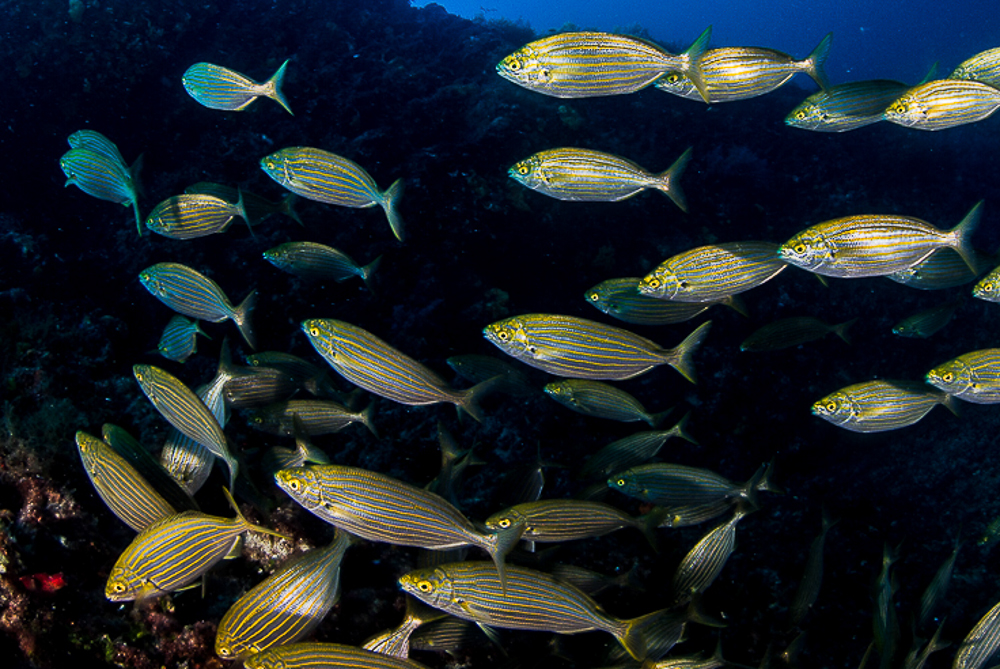
Our next species of fish actually has a number of aliases, a bizarre history and a health warning attached. Sarpa Salpa are also called dreamfish, salema, salema porgy, cow bream or goldline. These beautiful fish are a type of Sea Bream and have bright distinctive yellow stripes spanning their body. They congregate in large shoals all around Gozo throughout the year. In Arabic their name translates as “the fish that makes dreams” and this is because the fish contains a toxin which when consumed causes days of vivid, often overwhelming hallucinations. In fact, over 2,000 years ago in Roman times the fish played a vital part in the menu of the first night of the Three Day Feast. It is believed that because the fish only eat algae the toxins absorbed from this algae causes these extreme hallucinogenic effects when the fish is eaten.
- Pyrosomes
(Photo for reference, may not have been taken in Gozo)

This next sea creature, which is actually a colony, looks very surreal and other-worldly! But Pyrosomoes exist in Gozo’s waters and this photo showing a free-diver alongside a Pyrosome was snapped by Pete Bullen in Dwejra earlier this year. Giant Pyrosomes are bioluminescent (meaning they glow in the dark and fluoresce at night). Their name comes from the Greek word for fire (“pyro”) and body (“soma”).
This strange looking underwater entity is in fact a cylindrical shaped colony that can grow up to 60ft long and comprises of thousands of individual living creatures. Each one of the hairy looking neon spikes in the photo is a different living creature, called a ‘zooid’ and between them they are siphoning water through the tube in the middle, filtering out the nutrients. So, this odd looking free-floating colonial tunicate is actually several thousand living things all working collectively to feed each other. Also, these individual tunicates use cloning to reproduce, so the colony can recreate injured parts and continue growing even if broken in two. So, a Pyrosome can regenerate and potentially live forever. Isn’t nature amazing?
- Cuttlefish
Our final species is the Cuttlefish This fish is a decopod and so is similar to an Octopus or a squid, which also frequent our shores. However, the Cuttlefish has 8 arms and two tentacles.
https://www.instagram.com/p/BzghQ9QnSgj/
(Photo for reference, may not have been taken in Gozo)
These amazing creatures are bio-luminescent and converse with you using colour. Like an Octopus, the Cuttlefish’s colour changes according to its external surroundings. The fish has millions of pigment cells ‘chromatophores’ attached to muscles in its skin, so when it flexes these muscles the pigment releases into their outer skin layer altering the cuttlefish’s colour and sometimes even the pattern on their skins surface. Usually their happy colour is blue. This colour display ritual is also used by the male cuttlefish to attract females. Take note, if a Cuttlefish raises its tentacles it means they feel threatened and are preparing to defend themselves.

Watch this charming underwater footage of divers at Xatt L’Ahmar in Gozo meeting an inquisitive Cuttlefish
We hope this blog has proved to you there’s a wealth of wonderful marine life existing under Gozo’s waters just waiting for you to experience it for real. What’s more, Gozo’s many dive schools have highly skilled instructors adept at working with novice divers through to advanced technical divers and free divers. Many offer day, night, deep, wreck and cave diving sessions. So whatever dive experience you are seeking these local professionals will get you safely acclimatized to life under Gozo’s waters.
To find out more about diving in Gozo click here:
With thanks to Pete Bullen at Oceanfoto
READ NEXT: Catch of the Day – Favourite Fish Dishes in Gozo!








